
Helsinki is the capital, primate, and most populous city of Finland. Located on the shore of the Gulf of Finland, it is the seat of the region of Uusimaa in southern Finland, and has a population of 656,250. The city's urban area has a population of 1,268,296, making it by far the most populous urban area in Finland as well as the country's most important center for politics, education, finance, culture, and research; while Tampere in the Pirkanmaa region, located 179 kilometres (111 mi) to the north from Helsinki, is the second largest urban area in Finland. Helsinki is located 80 kilometres (50 mi) north of Tallinn, Estonia, 400 km (250 mi) east of Stockholm, Sweden, and 300 km (190 mi) west of Saint Petersburg, Russia. It has close historical ties with these three cities.
Helsingin Sanomat, abbreviated HS and colloquially known as Hesari, is the largest subscription newspaper in Finland and the Nordic countries, owned by Sanoma. Except after certain holidays, it is published daily. Its name derives from that of the Finnish capital, Helsinki, where it is published. It is considered a newspaper of record for Finland.

The University of Helsinki is a public research university located in Helsinki, Finland since 1829, but founded in the city of Turku in 1640 as the Royal Academy of Åbo, at that time part of the Swedish Empire. It is the oldest and largest university in Finland with the widest range of disciplines available. In 2018, around 31,200 students were enrolled in the degree programs of the university spread across 11 faculties and 11 research institutes.

Ruoholahti is a quarter in Helsinki, part of the Länsisatama neighbourhood and Kampinmalmi district. It is located in the southwestern part of the central city area of Helsinki, close to the Lauttasaari island, and it functions as the principal connection between the Helsinki city centre and the city of Espoo to the west. As of 2005 Ruoholahti is inhabited by approx. 3300 people. The Länsisatama port is also situated in Ruoholahti.
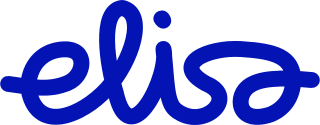
Elisa Oyj is a Finnish telecommunications company founded in 1882. Its previous names were Helsingin Puhelin and Elisa Communication Oyj. Elisa is a telecommunications, ICT and online service company operating mainly in Finland and Estonia, but it also offers digital services for international operators and other companies. In Finland Elisa is the market leader in mobile and fixed network subscriptions. Elisa provides services for communication and entertainment, and tools for improving operating methods and productivity of organisations. It cooperates for example with Vodafone.

The Senate Square presents Carl Ludvig Engel's architecture as a unique allegory of political, religious, scientific and commercial powers in the centre of Helsinki, Finland.

Pasila is a part of Helsinki, Finland, that is both a central-northern neighbourhood and district, bordering the areas of Alppila to the south, the Central Park (Keskuspuisto) to the west, and Vallila to the east.
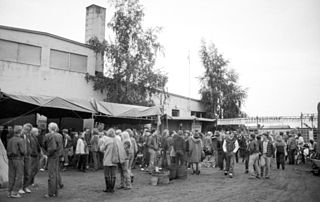
Lepakko or Lepakkoluola was a place for independent youth culture in Ruoholahti, Helsinki, Finland, functioning from 1979 to 1999.

The City-Center was a plan to raze and rebuild the block between the central Helsinki streets of Kaivokatu, Keskuskatu and Aleksanterinkatu, creating a unified, modern appearance for the area. The plan was originally drafted between 1958 and 1960 by Viljo Revell; Heikki Castrén continued work on the plan after Revell's death in 1964. The fulfillment of the plan would have required the demolition of several old buildings that are today considered to be a vital part of Helsinki's heritage.
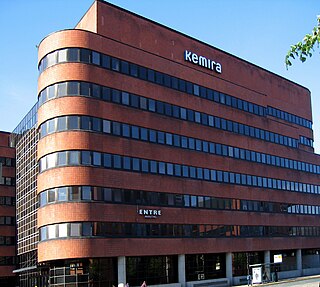
Kemira Oyj is a global chemicals company serving customers in water intensive industries. Kemira has two main segments, Pulp & Paper and Industry & Water. Kemira is headquartered in Helsinki, Finland.

YIT Oyj is the largest Finnish and significant North European construction company. YIT is headquartered in Helsinki and its stock is listed on Nasdaq Helsinki Oy. YIT develops and builds apartments, business premises and entire areas. YIT is also specialised in demanding infrastructure construction and paving. YIT operates in 11 countries: Finland, Russia, Scandinavia, the Baltic States, the Czech Republic, Slovakia and Poland.

Jätkäsaari is a peninsula and a quarter in Helsinki, the capital city of Finland. It is part to the Kampinmalmi district and Länsisatama neighbourhood. It was the location of the main container harbour in Helsinki until late 2008, when the harbour moved to the new facilities in Vuosaari. The terminal for passenger ferries to Tallinn, Estonia, remains in Länsisatama.
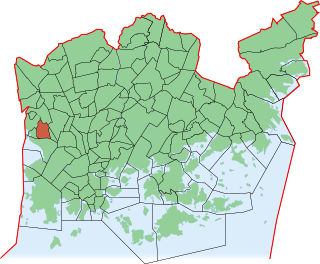
Munkkivuori is a quarter of the Munkkiniemi neighbourhood in Helsinki. The buildings and the plan of site are typical of the late 1950s. Most of the residential buildings in Munkkivuori are within a loop formed by Ulvilantie ring road. The automotive traffic to the residential buildings is routed along Ulvilantie whereas Raumantie no through road terminating in the center of the Ulvilantie loop provides access to public services and limits the through-traffic in residential areas. A designed network of crushed stone walkways provides easy accessibility around Munkkivuori for cyclists, pedestrians and other non-automotive traffic.
Professor Jussi Kalervo Huttunen is a physician, scientist, and former director general of the National Public Health Institute of Finland (1978-2003). He is an internist by training, and served as associate professor of internal medicine at the University of Kuopio 1975–1978. As the first director general of the reformed (1982) National Public Health Institute he guided the institute from previously routine microbiological and clinical chemistry laboratory to an internationally recognized research institute in public health.

Guggenheim Helsinki Plan was an initiative to establish a Guggenheim museum in Helsinki, Finland. A proposal was introduced to the Helsinki City Council in 2011. After rejection of the initial plan in 2012, a new plan, introduced in 2013, was considered and finally rejected in 2016.
Ihme Contemporary Art Festival is a yearly festival for contemporary art produced by Pro Arte Foundation Finland. The festival includes a public work of art, a varied programme of events around the artwork, and educational art projects. Ihme Project, commissioned by the Festival, is to be realised in the public realm. A varied Festival programme ranging from artist talks to film screenings opens up the Ihme Project for discussion and debate and is free to attend. Ihme also offers an art education programme, Ihme School, with various activities. The word "ihme" means a wonder or a miracle in Finnish.
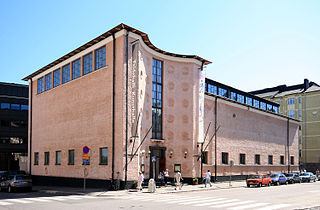
Kunsthalle Helsinki is a non-profit exhibition space founded by various Finnish artist and art associations in 1928. Presenting annually 5–7 major exhibitions and special events, the main focus of the exhibition programme lies in contemporary art, as well as design and architecture. The Kunsthalle has been a central place for changing exhibitions since the beginning, and does not hold a permanent collection.

The COVID-19 pandemic in Finland is part of the worldwide pandemic of coronavirus disease 2019 caused by severe acute respiratory syndrome coronavirus 2. On 29 January 2020, the first case in Finland was confirmed, when a Chinese tourist visiting Ivalo from Wuhan tested positive for the virus.

The Asemapäällikönhovi building is a mixed-use complex located at Asemapäällikönkatu 3, in the Eastern Pasila (Itä-Pasila) area of the district of Pasila in Helsinki, Finland.
Väinö David Lassila was a Finnish physician, anatomist and anthropologist who was a Professor of Anatomy at the University of Helsinki. He was the leading authority of the Finnish racial studies, but since the mid-1930s, Lassila dissociated himself from racial theories and became one of the prominent figures of Finland's human rights movement.
















